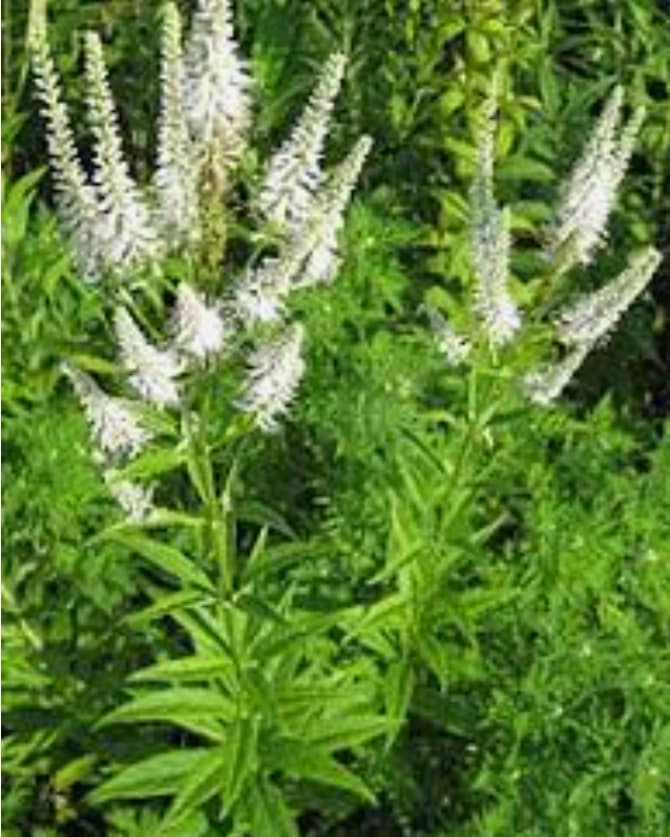Culver’s root shows off in summer with long stalks, growing up to 2 metres, with stems stout and erect bearing leaves in whorls of tiny white blossoms.
Attractive to bees the spiky flowers look like candelabras, with their many branches tipped by the inflorescences.
Occasionally, you may see blue or pink flowers, if the varieties have been hybridised with Russian varieties.
Place Culver’s root in the back of your garden beds, to prevent shading out shorter flowers.
Culver’s root grows in moist sites along riverbeds, in moist meadows or in sunny, damp woodlands. Care is easiest, when the perennial is planted in moist soil in a sunny spot.
However, being a wild flower, they are drought tolerant, once established.
Culver’s root flowers and foliage have been used in herbal medicine and reputed to be useful for various digestive tract ailments.
Its common name derived from the 18thC. American physician, Dr. Culver, who recommended the plant’s root for medicinal use.






